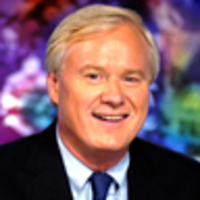The Robert F. Kennedy funeral train of June 1968 has become an American icon. As it rumbled slowly through New Jersey, Pennsylvania, Delaware, and Maryland, we see the faces of a lost country, frozen for history from grief and reverence.
Thanks to the San Francisco Museum of Modern Art, that national moment has been brought back to us, especially the faces. We see them both in the photographs taken from the train and by those taken by regular people from alongside the tracks.
Look at them—African Americans in Philadelphia and Baltimore, smaller groups of whites in the open country in between—the old Democratic coalition. This is the alliance Bobby Kennedy tried so hard to hold together amid the then-deepening national divide over civil rights and the Vietnam War.
ADVERTISEMENT
Kennedy knew himself the power of pictures, “optics” as we say in today’s politics. Running for president the spring of 1968, he sent a message of civic unity by the way he rode through racially tense Gary, Indiana, in an open car. On one side sat the middle-weight boxing champion Tony Zale, a white man, and on the other side sat Richard Hatcher, the city’s first African-American mayor. The presidential candidate in the middle wanted the city and the country to see he cared about both communities, which he did.
African Americans knew, of course, his record on civil rights. When President Kennedy was gunned down in Dallas, even Bobby wondered why it had not been he who’d been targeted that tragic November.
And for good reason.





Bobby had been President Kennedy’s enforcer in integrating Ole Miss and the University of Alabama. What many didn’t know is how he got the young Birmingham, Alabama, street protesters out on bail, or how he pushed his brother to give that famous national TV address pushing the historic civil rights bill.
But if it defined him to millions, it didn’t limit him.
What made Bobby Kennedy unique, the liberal columnist Jack Newfield wrote, “was that he felt the same empathy for white workingmen and women that he felt for Blacks, Latinos and Native Americans. He thought of cops, waitresses, construction workers and firefighters as his people.”
That was a fact. The senator from New York was noticed as the lone Democratic liberal to make a point each morning to say hello to members of the Capitol Police as he passed. When I heard that from an eye witness, it told me something about the man.
We’ve gotten so used to treating our politics as zero-sum. If you are for the cause of minority rights, you must be anti-police. If you’re sympathetic to the white factory worker in the Rust Belt, you must be against the aspirations of the young African American in the city. But why can’t there be a patriotism that joins us together instead of dividing us? Don’t we need leaders eager to champion the future of black, Latino, and white working people together?
The proof that this is possible is on display right now in the San Francisco Museum of Modern Art, in an exhibit co-curated by Clément Chéroux and Linde Lehtinen. We see the photographs taken from that Robert Kennedy funeral train, also those taken and saved by the on-lookers themselves.
It’s no surprise that one of the professional photos, taken by Paul Fusco, encouraged me to write my biography of Kennedy. His picture is of a small white family, obviously very poor. It shows the father and son saluting, the mother her hand to her chest, all in reverence for their lost hero.
There were the larger crowds, of course. None of us who watched that day will forget the African Americans in Philly singing “The Battle Hymn of the Republic.”
What grabs me even now is not so much that either group is there showing their patriotic respect but that both are there together.
The best way to honor Bobby Kennedy’s memory, beyond this great exhibit at SFMOMA by Clement Cheroux, is to find ways to bring that unity back.
I can still see the expressions of their faces that grey June afternoon—young, old, black, white, men and women, few well-off, all caught up in their shared devastation.
Why?
Because the man whose body was being carried to Arlington Cemetery was the one American leader of their lives who refused to turn his eyes from the people swept aside in our country’s rush for economic prosperity and global prominence. Nobody knew it better, more deeply than they themselves. It shows in their faces.
Chris Matthews is host of MSNBC’s Hardball and author of Bobby Kennedy: A Raging Spirit.






